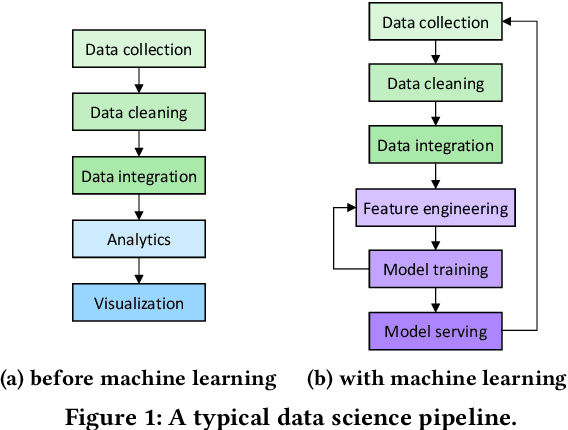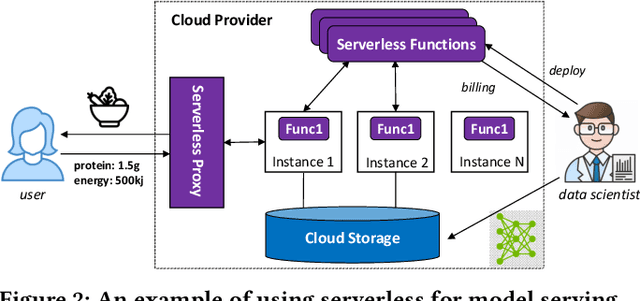Guoyu Hu
Serverless Model Serving for Data Science
Mar 04, 2021



Abstract:Machine learning (ML) is an important part of modern data science applications. Data scientists today have to manage the end-to-end ML life cycle that includes both model training and model serving, the latter of which is essential, as it makes their works available to end-users. Systems for model serving require high performance, low cost, and ease of management. Cloud providers are already offering model serving options, including managed services and self-rented servers. Recently, serverless computing, whose advantages include high elasticity and fine-grained cost model, brings another possibility for model serving. In this paper, we study the viability of serverless as a mainstream model serving platform for data science applications. We conduct a comprehensive evaluation of the performance and cost of serverless against other model serving systems on two clouds: Amazon Web Service (AWS) and Google Cloud Platform (GCP). We find that serverless outperforms many cloud-based alternatives with respect to cost and performance. More interestingly, under some circumstances, it can even outperform GPU-based systems for both average latency and cost. These results are different from previous works' claim that serverless is not suitable for model serving, and are contrary to the conventional wisdom that GPU-based systems are better for ML workloads than CPU-based systems. Other findings include a large gap in cold start time between AWS and GCP serverless functions, and serverless' low sensitivity to changes in workloads or models. Our evaluation results indicate that serverless is a viable option for model serving. Finally, we present several practical recommendations for data scientists on how to use serverless for scalable and cost-effective model serving.
 Add to Chrome
Add to Chrome Add to Firefox
Add to Firefox Add to Edge
Add to Edge